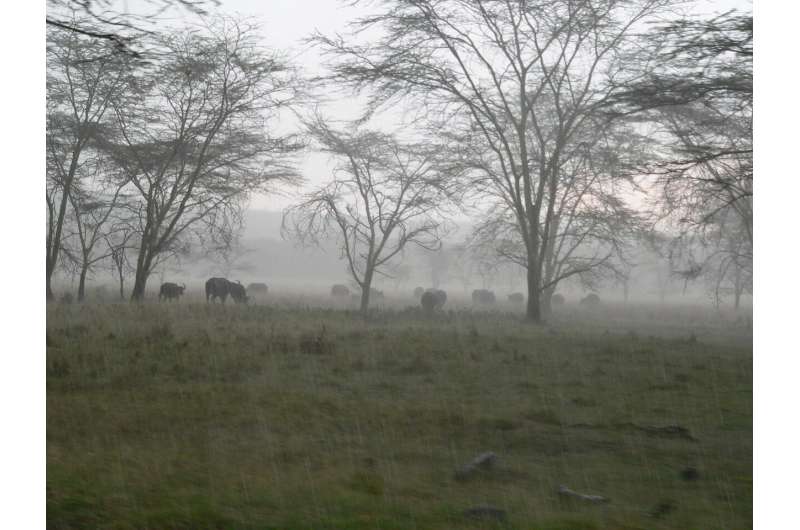Climate change projected to increase seasonal East African rainfall

According to research led by The University of Texas at Austin, seasonal rainfall is expected to rise significantly in East Africa over the next few decades in response to increased greenhouse gases.
The study, published in July in Climate Dynamics, used high-resolution simulations to find that the amount of precipitation during the rainy season known as the "short rains" could double by the end of the century, continuing a trend that has already been observed in recent years. The season known as the "long rains" on the other hand, is expected to remain stable according to the new projections. These results are in contrast to previous analyses that associated global warming with drier conditions that occurred earlier this century.
"There are two East African rainy seasons with different sensitivities to greenhouse gases," said Kerry Cook, a professor in the Jackson School of Geosciences' Department of Geological Sciences. "Our paper shows that the short rains will continue to increase—in fact, flooding and locust infestations are already occurring—and that there is no drying trend for the long rains."
Both the transportation of water vapor by atmospheric circulation and the distribution of rain are sensitive to differences between ocean and land temperatures. These differences occur because oceans warm and cool more slowly than the land due to differences in heat capacity.
When the short rains develop, typically with a peak in November, the southern hemisphere circulation is in a summer pattern, with high pressure over the ocean and low pressure over land in the subtropics, setting up a circulation pattern that funnels more moisture over East Africa. It is this rainy season that is more sensitive to greenhouse-gas induced climate change.
The region's long rains, on the other hand, appear to be less sensitive to greenhouse gas forcing. This season occurs from March through May, peaking near the northern hemisphere's spring equinox, when continental low pressures are centered over the equator.
The newly published simulations have a 30 kilometer resolution that resolves the complex East African topography, and more accurately represent currently observed rainfall amounts and seasonality than coarser resolution global models. Simulations of rainfall through 2050 are consistent with currently observed rainfall amounts and seasonality. These results show that the pattern of the long rains is not changing. But the short rains are increasing: rainfall in November over East Africa will increase by about one-third by 2050 and double by 2100.
"This research will allow people to plan ahead in East Africa," said Cook. "But future work will need to see how additional rainfall will be delivered because, if it is as intense as in the current observations and continues to impact agriculture, developing infrastructure will be important."
More information: Kerry H. Cook et al, Seasonal asymmetry of equatorial East African rainfall projections: understanding differences between the response of the long rains and the short rains to increased greenhouse gases, Climate Dynamics (2020). DOI: 10.1007/s00382-020-05350-y
Journal information: Climate Dynamics
Provided by University of Texas at Austin




















